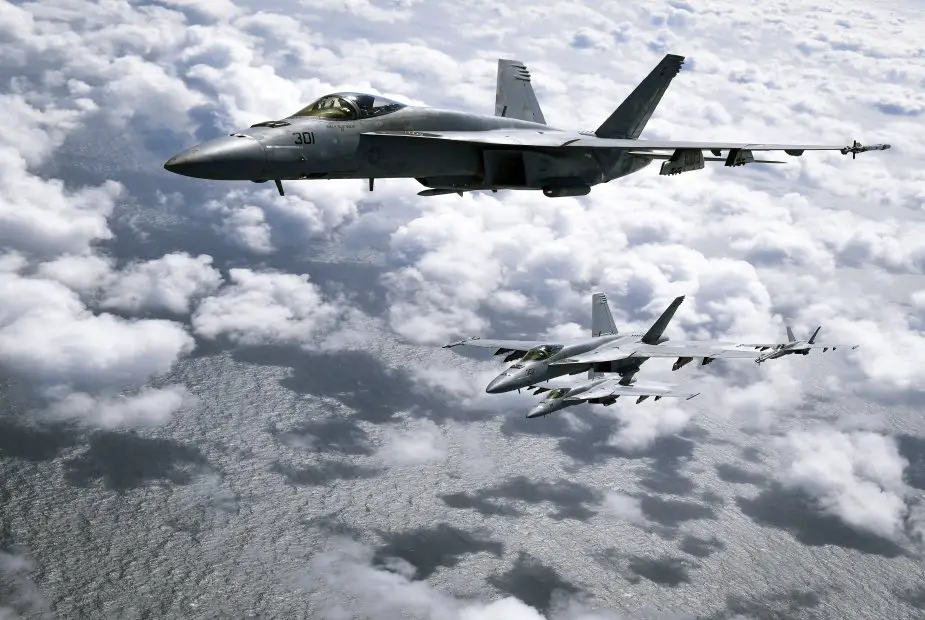Breaking news
Lemoore Strike Fighter squadrons returning more jets to flight line.
Two Navy Super Hornet squadrons at Naval Air Station (NAS) Lemoore, California, have reduced maintenance turnaround times and are boosting aircraft readiness as part of naval aviation’s maintenance reform initiatives under the Naval Sustainment System (NSS).

The NSS initiative leverages best practices from the commercial industry to help reform aspects of naval aviation’s fleet readiness centres, organizational-level (O-level) maintenance, supply chain, engineering and maintenance organizations and governance processes. Initially, the NSS is concentrating on getting the Navy F/A-18 Super Hornet fleet healthy before rolling out the approach to every Navy and Marine Corps aircraft.
Strike Fighter Squadrons (VFA) 22 and 122 were the first to implement O-level maintenance reforms following visits from commercial aviation consultants in December and January.
Reforms include assigning crew leads to manage the maintenance on each aircraft and reorganizing hangar spaces, parts cages and tools.
The most significant change has been the delegation of ownership over each aircraft in for repairs from the squadrons’ maintenance material control officers, or MMCOs, to individual crew leads comprised mostly of first-class petty officers.
Traditionally, MMCOs must keep track of the status of each aircraft in for maintenance as well as the Sailors working on them, and that’s in addition to deciding what maintenance actions are required for each jet and which aircraft are safe to release for flight. Assigning junior-level crew leads to each jet removes some of that burden from the MMCOs and has led to improved communication and increased accountability.
“The crew leads are not making the maintenance decisions; that's still done by the maintenance controllers, but what it allows for is it sheds those maintenance control chiefs of having to know every status of every jet, of every person, all day long,” said Lt. Cmdr. Brandon Michaelis, O-level Reform Champion for Commander, Naval Air Forces (CNAF). “So, they can focus on releasing safe aircraft by empowering those first-class petty officers, who can now own that process and know where the people are, know the status of the parts, and brief that up to the line.”
For the petty officers accustomed to doing their job a certain way, the reform did not come easy. But the benefits have been evident, said Aviation Electronics Technician 1st class Victor Perez, the leading petty officer for VFA-122’s avionics shop and one of the squadron’s selected crew leads.
“At first the changes didn’t feel productive because we didn’t really understand it, but now that we’ve had some time with it, it’s definitely helped improve our processes and communication,” Perez said.
Used to focusing exclusively on avionics, Perez said serving as a crew leader has forced him to approach the maintenance of his assigned aircraft more holistically. The increased responsibility of bringing an entire jet back online ultimately leads to a greater sense of accomplishment, he said.
“You get kind of person with an aircraft,” he added. “Some aircraft are easy, and some are a struggle to get through. Rather than working on a jet for a couple of hours to complete the one thing assigned to your shop and then moving on to the next jet, this way you take more ownership toward completing the whole thing.”
In some cases, exceptional second-class petty officers have also been considered for crew lead, including Aviation Electrician’s Mate 2nd Class Michaela Zadra, a member of VFA-22’s quality assurance division. Having crew leads that can focus on individual jets — and communicate with the various maintenance shops — relieves maintenance control from having to keep near-constant track of as many as a dozen aircraft at a time, Zadra said.
“Crew leads have cut down on empty communication, so now I, as a maintainer who is not stuck behind a maintenance control desk, can walk around to each shop and talk to them personally,” she said. “There’s a lot more communication one-on-one, instead of one-to-one-to-one and then to maintenance control. It's definitely helped with communication and productivity with the jets.”
In tandem with the crew lead concept has been the utilization of a whiteboard alongside each aircraft that informs anyone passing by as to the jet’s status. Information on the boards includes the names of the crew chief and additional personnel assigned to the aircraft, what maintenance is needed, and the expected completion date.
“If you physically walk through one of our hangars today, you can tell which ones have been reformed and which ones haven't,” said Vice Adm. DeWolfe H. Miller, III, CNAF. “You know the exact status of that airplane, you know who's working on that airplane and when they expect that airplane to be up. There's going to be a crew lead who has that ownership.”
In addition, the two squadrons have begun treating the spaces around each Super Hornet in their hangars as dedicated workspaces, with all necessary tools and parts kept beside the aircraft rather than back in one of the various maintenance shops.
“We're now treating the airplane a little more, as an analogy, like a patient getting surgery,” Miller said. “I am the doctor as the maintainer, and I said, ‘scalpel,’ and my tool is right there. What we're seeing with that sort of approach, having our tools next to the airplane, having our status board next to the airplane, everything is going to the point of action being around that airframe, and we're seeing a really significant improvement in our mission capable rates.”
Both squadrons have also begun keeping larger parts in a centralized “parts cage” in the hangar, dramatically reducing the amount of time Sailors spend traversing the hangar in search of equipment rather than with their hands on an aircraft.
“It may be five minutes here or five minutes there, but over the course of a day across all those technicians, that's a lot of time saved by having those parts close to where the job is being done,” Michaelis said.



















